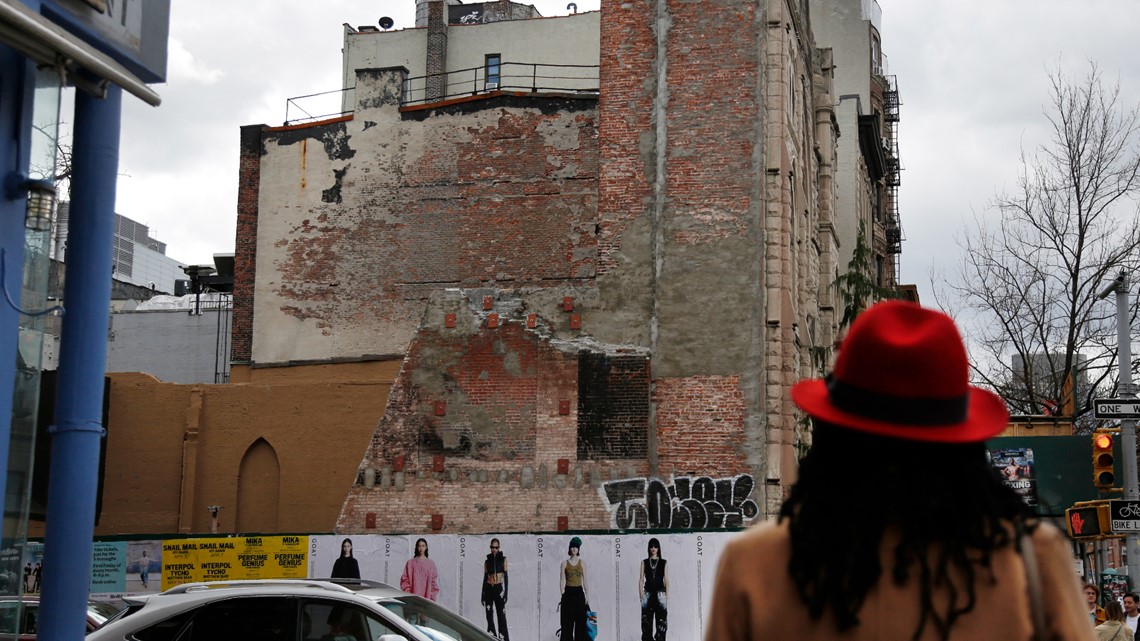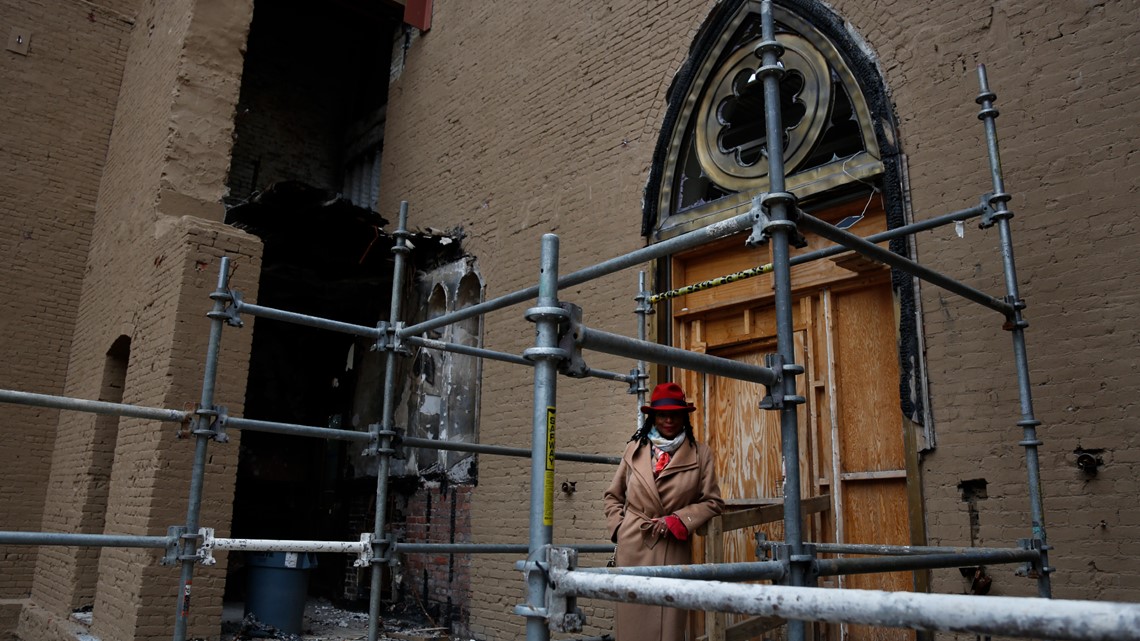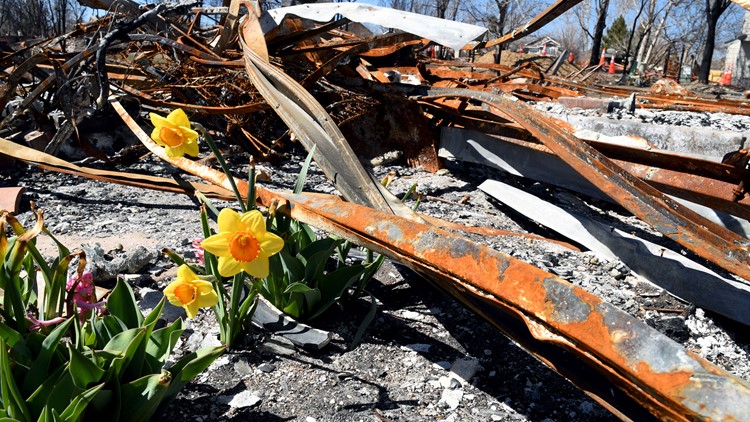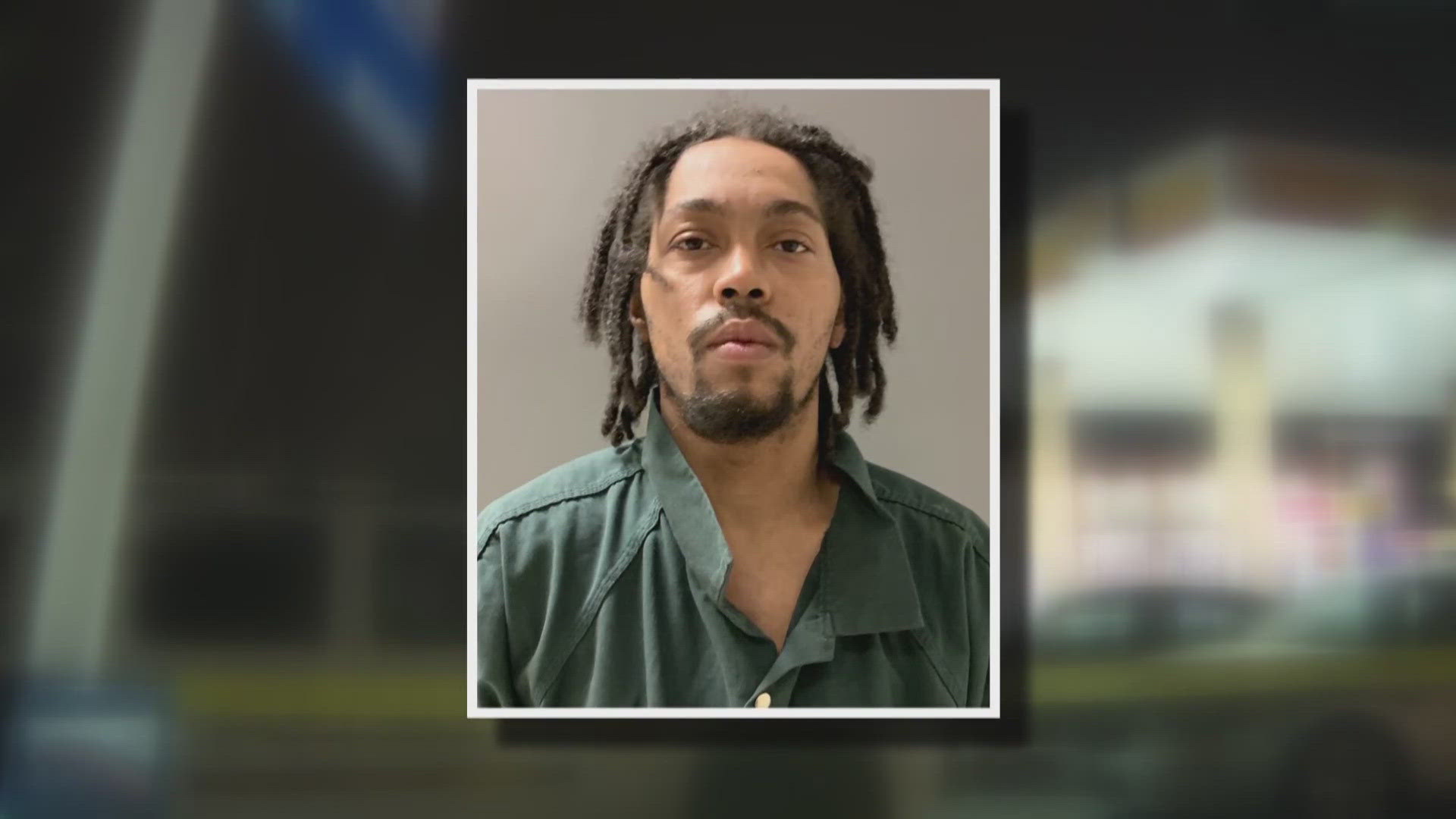MAYFIELD, Ky. — Easter’s message of renewal will be especially poignant this year for four U.S. congregations rebounding from disasters.
Their churches were destroyed by a tornado in Kentucky, gutted by a blaze in New York City, shattered when Hurricane Ida hit the Louisiana coast, and filled with smoke and ash by the most destructive wildfire in Colorado history. For the pastors, Easter’s promise of hope couldn’t be more timely.
Kentucky
Members of Mayfield First United Methodist Church won’t be celebrating Easter in their 100-year-old sanctuary. They can’t.
A Dec. 10 tornado ripped apart their stately building as it carved a deadly path through the western Kentucky community of about 10,000 people. A demolition crew tore down the rest.
Instead, on Easter Sunday, members will walk into their temporary home, Christ United Methodist Church, to mark the holy day.
“That’s going to be tough,” said the Rev. Joey Reed. He rode out the storm at Mayfield First, wondering if he would live to officiate his daughter’s wedding.
Reed started ministering soon after, encouraging his roughly 100 church members to pivot from suffering to servanthood. Congregants walked through the disaster zone assessing needs, passing out gift cards, helping residents rescue belongings.
“The example of Jesus Christ is the suffering servant,” he said. “When we turn away from our own difficulties … we are able to let go of our own pain for a minute and focus on our neighbor.”


Only in recent weeks – after performing his daughter’s wedding, escaping to a cabin with his wife, mourning the death of their cat – did Reed realize he was still carrying around trauma from the storm.
But there has been hope amid the despair, like the pieces of the church’s baptismal font rescued from a landfill. “We are all about finding those bright spots,” Reed said.
New York City
The Middle Collegiate Church gospel choir swayed to the beat of a live band during a joyful rehearsal at a synagogue that has become their new home.
“It’s Passover and our Jewish friends are exercising the most radical hospitality,” said the Rev. Jacqui Lewis, the church’s senior minister.
Her church was gutted by a fire on Dec. 5, 2020, a grim coda to year of pandemic-related challenges. As the church rebuilds, its congregants were recently welcomed to gather in-person at the East End Temple.
“It was very clear when the tragedy fell on Middle Collegiate Church that we needed to live out our values, open our doors,” said Rabbi Joshua Stanton, who will offer prayer during the church’s Easter celebration.


On Palm Sunday, the choir belted out hymns in preparation for Easter.
“It feels like a miracle, going through the fire and the pandemic worldwide, all that we’ve gone through… to now have a place to call home,” said Joy Lau, a member of the Jerriese Johnson gospel choir.
The multicultural congregation aspires to “take-it-to-the-streets activism.” Members have provided meals to people with AIDS, worked on storm recovery, demonstrated for racial justice and for LGBTQ and women’s rights.
The church’s belfry housed New York’s Liberty Bell, which tolled to mark the country’s birth in 1776 and has rung in remembrance of the 9/11 terror attacks. The bell and the skeletal façade were the only parts of the sanctuary to survive.
Amid the grief of losing their church, Lewis asks parishioners to “worship God with joy” and embrace Easter’s promise of hope.
“For Middle, this is a time of resurrection,” she said.


Louisiana
The windows at St. Charles Borromeo Catholic church were blown out, and its ceiling, sacristy and vestibule crumbled after Hurricane Ida blasted ashore in August, hitting the small fishing community of Point-aux-Chenes, about 80 miles southwest of New Orleans.
Since then, its pastor, the Rev. Rajasekar Karumelnathan, has celebrated Mass in the rectory and under a tent in the parking lot. Attendance dwindled after the storm: from about 80 people who used to attend Sunday services to about 15 now.
Celebrating Christmas under the ruins was especially emotional for the congregation, the pastor said. But he expects a lighter mood for their first, post-Ida Easter service, with its promise of eternal life.
“We have lots of hope,” he said. “Easter strengthens us.”
Parishioner Teddy Neal, who lives a half mile from the church, is still rebuilding his storm-damaged home. He would love to see his church and home restored.
“I see Easter as a new beginning,” said Neal, a truck driver. “I’m pretty much humbled, where it doesn’t matter what the conditions are -- as long as I’m present with Jesus during the Eucharist.”
Colorado
At the charred remains of Bill and Jackie Stephens’ home in Superior, where they raised four kids and made countless memories over 22 years, the daffodils are blooming again.
When he looks at the green shoots and yellow blossoms, Bill Stephens sees rebirth. He also feels grief anew: for the house, the incinerated photos, the beloved yard.
“As a pastor I see this and go, this is an Easter illustration. It’s life out of the death,” Stephens said. “In some ways it’s beautiful, and in other ways it’s the reminder of, dang, we lost a lot.”
The lead pastor at Ascent Community Church in neighboring Louisville and his loved ones are one of 26 families in the congregation who lost their homes Dec. 30 in a wind-whipped wildfire that destroyed 1,084 residences in Denver-area suburbs.


The church itself, a cavernous space inside a former Sam’s Club, was largely spared. The flames wrapped around the building, scorching trees and shrubs. But ash and smoke seeped in through skylights and ventilation shafts, coating everything in sooty charcoal.
Volunteers hauled out everything that wasn’t nailed down to be washed before a building-wide deep clean. Ascent returned in February after two months of worshipping in a hotel ballroom.
In the early days, police used Ascent’s parking lot as a staging area for displaced residents. Thousands showed up and were met by church members, therapy dogs and meals.
Stephens said suffering his own loss positioned him to minister to others. While he stresses that there's still a long road to recovery, he sees special meaning in Christ’s resurrection this year.
“That Jesus conquered the grave, conquered the sin ... and breathed life on Easter Sunday,” Stephens said, “there’s something really powerful about thinking about ours as just a minor version of that.”


